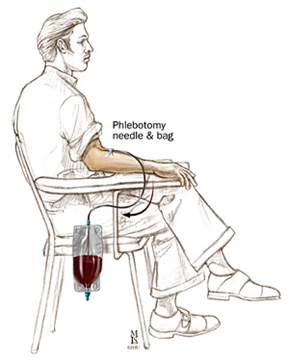Hemochromatosis

Hemochromatosis is a metabolic disorder in which your organs accumulate excess iron, leading to organ damage. Hereditary hemochromatosis affects one in 300 people in the United States. However, it often goes undiagnosed, partially due to its nonspecific symptoms. The classic form of hemochromatosis is most common in Caucasians of Northern European descent. It is a genetic disease that may be found in families.
Hemochromatosis Symptoms
Symptoms of hemochromatosis usually appear after age 50, once significant iron has accumulated in the body. Symptoms may appear later in in women, typically about 10 years after menopause.
Many patients with hemochromatosis do not exhibit any symptoms. The disease is usually diagnosed as a result of family screening or after a blood test indicates a high level of iron or abnormal liver enzymes. Early signs are nonspecific and may include:
- Weakness and fatigue
- Increased skin pigmentation
- Hair loss
- Impotence and loss of sex drive
- Joint pains
- Memory loss
More specific symptoms occur when the iron accumulates in particular organs:
- Iron deposits in the heart muscle may cause an arrhythmia, or heart failure.
- Iron deposits in the liver can predispose a patient to fibrosis, cirrhosis and liver cancer.
- Iron deposits in the pancreas can cause diabetes mellitus.
- Iron deposits in the brain and gonads (ovaries and testicles) can lead to impotence.
Patients with hemochromatosis are at increased risk for pancreatic cancer. Arthritis also can develop as a result of the excess iron.
Hemochromatosis Diagnosis
A diagnosis of hemochromatosis begins with a complete physical examination, during which you describe your symptoms and medical history. Other tests include:
- Blood Tests
- Preventive Screening
- Liver Imaging
Blood Tests
Your doctor will order a blood test to check for a high concentration of iron. Blood tests include:
- Serum ferritin: This test measures the amount of iron stored in the liver. Levels can be very high in hemochromatosis.
- Serum iron: Tests how much iron is in your blood. This must be done after fasting.
- Transferrin saturation test: Another type of blood test that measures the amount of iron in your blood.
- Liver enzymes and function tests: These test determine whether or not there is inflammation in the liver and whether the function of the liver is normal.
- Genetic tests: If you have high iron levels in the blood, testing the DNA (in blood) for mutations in the HFE gene can confirm the diagnosis. These tests are also used to screen family members.
Liver Biopsy
A liver biopsy offers a definitive diagnosis. Your doctor may recommend a biopsy if you have elevated iron levels in your blood, especially if your symptoms are consistent with hereditary hemochromatosis. During a biopsy:
- You receive local anesthesia.
- Your doctor removes some liver tissue. Risks include pain and bleeding.
- The tissue is sent to a pathology lab for analysis to determine whether or not you have hemochromatosis. This test can also determine whether or not you have liver fibrosis.
Preventive Screening
Because hemochromatosis symptoms are nonspecific, patients who are considered at risk for this disease should be screened regularly. This way, if the disease is present, doctors can find and treat it in its early stages.
You should be screened if you have a first-degree relative with hereditary hemochromatosis and you are between 18 and 30 years of age. The risk of organ damage increases the longer it is untreated. The initial testing will most likely include a number of blood tests.
Imaging: MRI of the Liver
Magnetic resonance imaging (MRI) of the liver can be performed to estimate the amount of iron in the liver. Some types of MRs can estimate the amount of liver fibrosis as well. This is a noninvasive test and can sometimes take the place of the liver biopsy. An MRI may be difficult for patients with fear of enclosed spaces.



